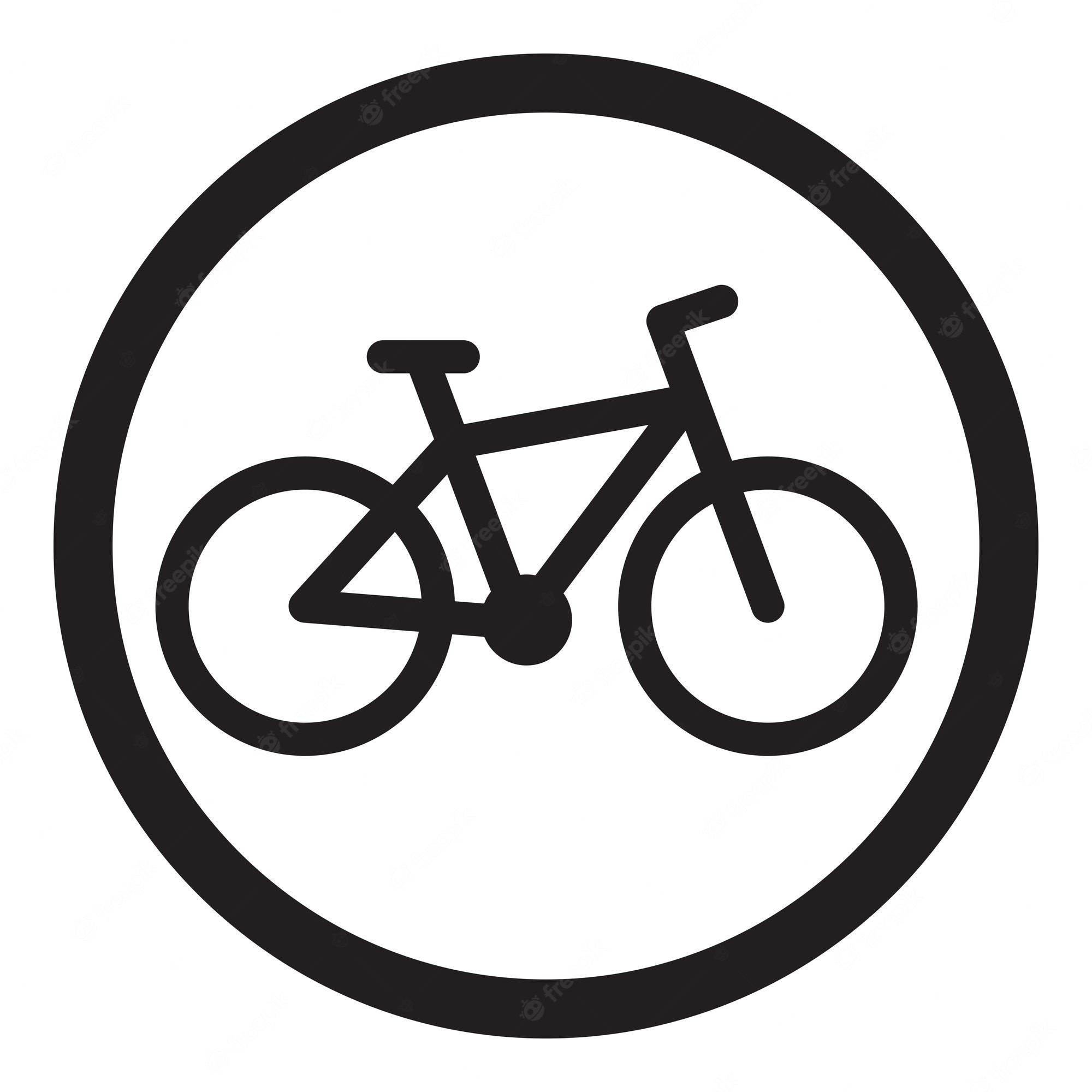
As a cyclist, I’ve seen more motorists blow through stop signs than other cyclists, and they are the ones who can kill someone.
Idaho Stops need to come to Canada. Not only have they been proven to be safer, but it makes sense in a dozen different ways.
I’ve sat at red lights (as a cyclist) and the light DOES NOT CHANGE unless a car is waiting at that same light. We’re talking 10+ minutes. Who the hell thinks it’s OK for cyclists to have to sit there indefinitely when no other cars are around, just because of some outdated laws? We need to change with the times!

As a Torontonian cyclist, according to what I see, we blow through stop signs way more than cars. Way more. Of course physically we can mostly just harm ourselves.
But yes the rules of the road have to change in this regard. The status quo is clearly car-friendly. Not only it doesn’t prioritize cyclists, but it doesn’t prioritize pedestrians either.
BTW, ebikes help negotiating the status quo a lot. They make stopping at stop signs trivial, as well as keeping a safe speed when riding where there’s no bike lanes.

I’m east of the city, and we don’t have nearly the same amount of cyclists as you do, but only very few ever cautiously ride through a stop sign. I won’t lie, but I did see quite a few cyclists going through stop signs when I was in the city last weekend… not putting anyone in danger, just to save time.
I thought I read about a protest in Toronto where cyclists were stopping at EVERY stop sign as a large group, backing up traffic in an act of malicious compliance. I’d be totally down for that if crazy motorists didn’t turn their rage onto me, rather than onto these outdated rules.
I agree that e-bikes can level the playing field, but the general public shouldn’t need to have a powered bike to have fair rules, either.

That protest sounds amazing. Motorists can’t actively rage at a large group of cyclists. 🤭
Yes, ebikes shouldn’t be needed by everyone to cycle safely. The rules are bad and so is the infrastructure.

Found it! It was in protest to cyclist harassment by Toronto Police in High Park.
Perhaps the cyclists in Barrie need to stage something similar :)
No way man, so many vehicles don’t come to a complete stop. I see it walking, and biking around Toronto. Think right on red - the only time cars come to a complete stop in Toronto is if they’re going to run over someone (and even then that stop them).
And the way our police enforce it here is that they expect a complete foot down stop, on some stretches in Toronto that’s a complete stop every 200m. Or a complete stop on a bike lane with a T intersection where there’s no chance of a car being there.
We were lazy and didn’t bother actually writing different laws for bikes and just sort of grouped them in with cars. And then we have dickheads like TPS or Barrie PD here ticketing cyclists for rolling through a stop sign.

I don’t agree that they do it more, but they do it a lot. That’s my anecdata. Now let me join you in toRANting about it.
Stop on right on red is a fucking abomination. No one stops. I have no stats but I bet this is where a huge proportion of pedestrians get maimed. People close to me were run over this way. I was once saved by a bus driver massively honking to warn me that an imbecile was turning right on red from the middle lane, at speed. At first I WTFed at the bus driver, a second later I was running to save myself from the incoming moron.
And the way our police enforce it
Police are enforcing anything? Yes I know this is a topic about cyclist getting ticketed in Barrie, but honestly, I think the TPS have completely abdicated from enforcing any road rules at this point. I will accept being ticketed for stop signs if they enforced those across the board, as well as most other common infractions like right on red, or … straight on red, which is now very common. Enforcement across the board will suck for some things but it will absolutely improve the status quo on the road. Things have gotten pretty bad over the last decade for all road users.

And those jurisdictions are what is colloquially known as “stupid”.

It’s hard not to see this as ignorance given how easy it is to look up the great safety record of these laws (i.e. right there on the Wikipedia page).

https://en.m.wikipedia.org/wiki/Idaho_stop
See the section on safety. It’s safer for bicycles to yield at stop signs instead of come to a complete stop. The most dangerous part of cycling is in an intersection, and you’ll spend more time in them when coming to a complete stop every time

Have you decided to change your opinion yet, since you’ve had plenty of time to read about and fix your own “stupid” though?

Considering how much stop signs are overused in North America, this is unreasonable. Either replace many stop signs with yield signs where safe to do so, or allow cyclists to pass through stop signs as if it they were yield signs. Holding momentum is important for cyclists.

While true, in the status quo, blowing through stop signs when other users have the right of way increases the probability of accidents. It puts the responsibility squarely in the person that has to decided whether to stop or not. The one that doesn’t have to stop is simply going their way. If there’s a monetary lapse of judgement on the cyclist’s side, they become a pancake. I’m staying this as someone who regularly “Idaho-maneuvers” in certain places.

Except that data from states which permit Idaho Stops (i.e. treating a stop sign as a yield, and a stop light as a stop sign) has not shown any increase in cyclist danger. The inverse is true, which is why Idaho Stops have been expanding into other states.

Do the drivers in Indaho know that cyclists are expected to be treating stop signs as yield? My guess is yes. That could be making a difference in the safety profile.

Idaho, Delaware, Arkansas, Oregon, Washington, Utah, North Dakota, Oklahoma, Colorado, Washington, DC, and Minnesota :)
I don’t know what motorists know or don’t know, but why would that make a difference?
An Idaho stop has to do with cyclists not having to needlessly wait at stop signs or red lights, so drivers don’t really have to think about it, since they likely won’t even be at those same intersections where an Idaho Stop is used. It **decriminalizes ** inefficient, dangerous, nonsensical stops for cyclists.

Realistically, I usually stop if I see a car even if I have right of way, because I’m the one who gets hurt if they roll through. Modern cars’ A-pillars are thick and I know I’m hard to see. I only exercise my right when there aren’t cars near the intersection, or I made eye contact with the driver and they waved me through.
But why would a driver have to know I’d treat it as yield? If they arrive first, I have to stop—same as if it were a stop sign—and if I arrive first, they have to stop: same as if it were a stop sign.
The only difference a driver will see happens if I arrive first and don’t stop, and then they’ll either know the law and appreciate me getting out of the way faster, or not know the law and think I’m one of those aloof cyclists. But they still had to stop.

Noooooo.
They have those in France and it’s so dangerous! There are so many collisions that happen because of the right of way at intersections.
I’ve driven there and it’s freaking scary.

I think most European countries are designed this way. In my experience it just takes getting used to and is a bit uncomfortable, but it just feels so much more efficient, whether driving or on a bike. It feels unnecessary to have to stop at every block on a neighborhood street when there’s no one around.

The right of way thing I’ve only seen in France in my travels to Europe.
It’s so crazy. You have to assume that you don’t have the right of way, unless there’s a sign that says otherwise. (A yellow diamond with a thick white border) On any roads so you have to stop at every intersection. Not all intersections are obvious, especially in a city like Paris. And if you’re not aware of that rule or you just forget about it, which is easy if you’re foreign, then accidents can happen.
The French are actually thinking about putting up stop signs instead to reduce the number of accidents related to these situations.

If you’re gonna ride your bicycle on the road, you better stop at a stop sign. Don’t be an idiot.

I mean, I always yield at stop signs, but I am not likely to come to a complete stop on a bike if there is nobody to yield to. Many car drivers don’t either, as any road user is already aware.

“Oh they’re doing it so I can do it to,” said the pile of bones and guts spread out along the intersection.
Cars have a little more protection than a bicyclist for the occupants of the vehicle.

If anything, the fact that cars are more likely to injure another road user than their occupants, is even more reason that they should come to a complete stop, moreso than any other road user.

The rules and laws around using roads are designed without consideration for the type of vehicle using it. Everyone needs to stop at stop signs and red lights.

The rules and laws around using roads are designed without consideration for the type of vehicle using it.
That’s demonstrably false. Bikes are treated differently from cars in many regards. See: bike lanes, green “bike boxes” at intersections, rules for passing, highway access, etc. Why not the “Idaho stop”?

The “Idaho stop” (red as stop, stop as yield for cyclists) is a thing in several jurisdictions, and research shows it is as safe or safer that way.
Still ought to follow the laws, but there’s reason to want those laws to be different.

Cars and bicycles are two completely different things, and should have different rules governing them. A car is larger, deadlier, and takes longer to stop than a bicycle. A car going 40-50 kph is traveling with far more force, and won’t be able to stop as fast as a bicycle traveling 20 kph.
It’s like saying cars and planes should follow the same rules. Or even better, cars and semi trucks. There are highway speed signs that state one speed for trucks and one for everyone else. Or certain roads where trucks aren’t allowed to drive on. We already have a tiered approach to motor vehicles, it should extend to bikes as well. Blanket approaches don’t work in our modern world when we have cars, bikes, ebikes, escooters, etc all sharing the same space.

Cars and bicycles share the same travel surface. In order to interact safely, they need to follow the same rules. Using your example, semis still need to follow nearly all the same rules as cars. There is a base ruleset for everyone who uses a roadway (including, one must come to a complete stop at a traffic control device that directs them to do so), and only specific modifications to certain rules for additional safety for vehicles in certain classes.
Here in Saskatchewan, bicycles fall under the Traffic Safety Act if they are on public roadways. That means they can be ticketed for exceeding speed limits or disobeying traffic control devices.
If different modes interact on the same travelway, they must share the same set of rules. If they don’t, you get conflicts, which means collision between vehicles, pedestrians, bicycles, and other wheeled modes of travel.

In my example the more dangerous vehicle (semi) has more restrictive rules. Should the less dangerous vehicle (bicycle) not have less restrictive rules? I’m not talking about no rules at all, but treating stop signs as a yield sign for a bike makes sense considering the shorter stopping time, slower speeds, and wider perspective (no parts of the car to potentially block vision) on bikes.
The point of stop signs is so that 1000+ kg vehicle doesn’t interact with traffic, usually from a side street onto a main street, without looking first. Or to ensure there is a known pattern at a 3 or 4 way stop. You need this when the average stopping distance for a car traveling 50 kph is 35 m in dry conditions. You don’t need the same safety measures with bikes because of the physics involved with a smaller, slower, faster stopping, etc bike.
Also, all of this is irrelevant to the point if we had proper bike infrastructure in cities there wouldn’t be a shared road space, or not nearly as much. The infrastructure is designed with cars and truck in mind, as are the rules. If we had more separation between the two methods of travel you would have fewer issues.

I agree, proper bike infrastructure would solve much of this issue. With that, many drivers treat stop signs as yield anyway.
I noticed when driving on a trip in Europe (Norway and Scotland) that many of the intersections where there would typically be a stop sign in North America had only a yield sign. It’s quite simple; give way to oncoming traffic and proceed when safe. Unfortunately, many North Americans think yield means ‘assume I’m going to proceed into this intersection and only brake if I have to while I’m rolling through the crosswalk’.
It mainly comes down to what other members of the travelway expect you to do. If you are predictable, your chances of conflicting with others is diminished. Unfortunately, unless you can convince lawmakers to make the change, a stop sign is going to mean come to a complete stop, which is also what others are expecting you to do.

Seems OK to me. The only issue would be if a cyclist not following the road rules causes a car or truck to take evasive action and this causes an accident with another vehicle.

Defos. Doesn’t matter what your driving, be predictable and you won’t get hurt.

Folks, I think with this wholesome standard-fare cars vs bikes who-dun-it rant fest, we’ve really arrived on Lemmy. I feel home. Thank you. ♥️

meanwhile 4,000 lb vehicles run stop signs in front of fucking daycares in my neighbourhood

Nobody should run them. Contact your municipality to increase enforcement until the community gets the message.

Everyone stops at a stop sign. Cars, buses, pedestrians, motorized wheelchairs, and bikes. This is not an issue that needs separate rules for cyclists. Perhaps they can re-evaluate that intersection, does it need a sign? If cyclists can easily coast through the intersection, the need for a stop sign is up for discussion. Perhaps a Yield sign.
My area has lights for intersections with more than 2 lanes per direction of travel, roundabouts for smaller busy roads, and most of the residential intersections don’t have signage. Stop signs are, mostly, used to slow traffic down.

I disagree. The Idaho stop is a very real law and it’s been proven safe. There absolutely should be a different rule for cyclists and we already have decades of proof that it not only works but increases safety.
Also, pedestrians don’t stop at stop signs currently. It’s perfectly legal for them to continue without any kind of stop and I’m not aware of any place on earth that requires pedestrians to stop or has ever given a ticket for the them failing to stop.

Eh, there have been people who have gotten a jaywalking ticket in an intersection after they were hit by a car.
Not common and my city is apparently hostile to anything not on four wheels.

This is inherently the problem with (most) cyclists, and why motorists in general don’t like them.
They want it both ways. They want to be a pedestrian when it suits them, when they want to blow stop signs, jump up onto the sidewalk, expect cars to stop for them at crosswalks, and weave through traffic at will. But they ALSO want to be a vehicle when it suits them, when they are sharing a road that doesn’t have a bike lane, for example.
And they seem to think that the motorist should just KNOW when they are being one or the other.
It’s frustrating and annoying. They are a vehicle. They are governed as a vehicle. Suck it up, cyclists.

I find it so tiresome hearing about how cyclists are supposedly more entitled than motorists (or the other way around, since cyclists say the same things about drivers).
Drivers routinely roll through stops, jockey for position, move erratically or dangerously, block crosswalks or bike lanes, distract themselves on their phones, get upset when mildly inconvenienced by having to underspeed behind a cyclist taking the lane for safety, etc.
-
Being entitled and breaking the law to get places faster is universal; I think uou’re just acclimated to drivers doing it.
-
The infrastructure is so car-oriented and bike-hostile that following the law often disadvantages cyclists or puts them at risk. That doesn’t justify, say, biking fast across a crosswalk, but sidewalk-riding on a 4-lane road without bike lanes? IMO it does.
-
There’s bias here in treating the worst cyclist behaviour as being something condoned by cyclists at large. Kind of like if someone said “drivers just want to drag race around town”.
-

No, motorists don’t like them because they are different. That’s it. It’s someone they can place their road rage on.

If that were true, you’d expect car drivers to feel the same way about, for example, motorcycles, rollerbladers, and longboarders… Yet people don’t have the same feelings as they do with cyclists.
Also since when do car drivers have any problem whatsoever applying their road rage to other car drivers? Lol.

Nah, drivers rarely go on the internet to rage about other drivers blowing stop signs, speeding, tailgating, running red lights, or other idiotic things. Cyclists bring out waaaay more emotions in people than other drivers. Just read any cycling thread…like this one.

It goes the other way too, when a cyclist is considering stop sign as a yield then motorist complains that cyclist should behave the same way as cars.
When cyclist behave are riding in the middle of the road because it’s safer for them then motorist complains that they are not supposed to be there.

The thing is if you’re going to be sharing the road with other vehicles, you need to ride predictably and communicate with other drivers/riders or you’re just more likely to get yourself killed. Deciding to ignore a Stop sign is not predictable behaviour.

This coming from a city which made being homeless illegal, doesn’t surprise me.
And yes, cyclists SHOULD be respectful.

I understand the need to obey traffic laws on a bicycle, but treating them the same as a 2+ ton projectile that can turn humans into meat paste or cause tens of thousands of dollars in damage to a structure in seconds by effortlessly adjusting your right ankle by 25° is absurd.
Fines should be proportional to the potential damage of the Infraction.

